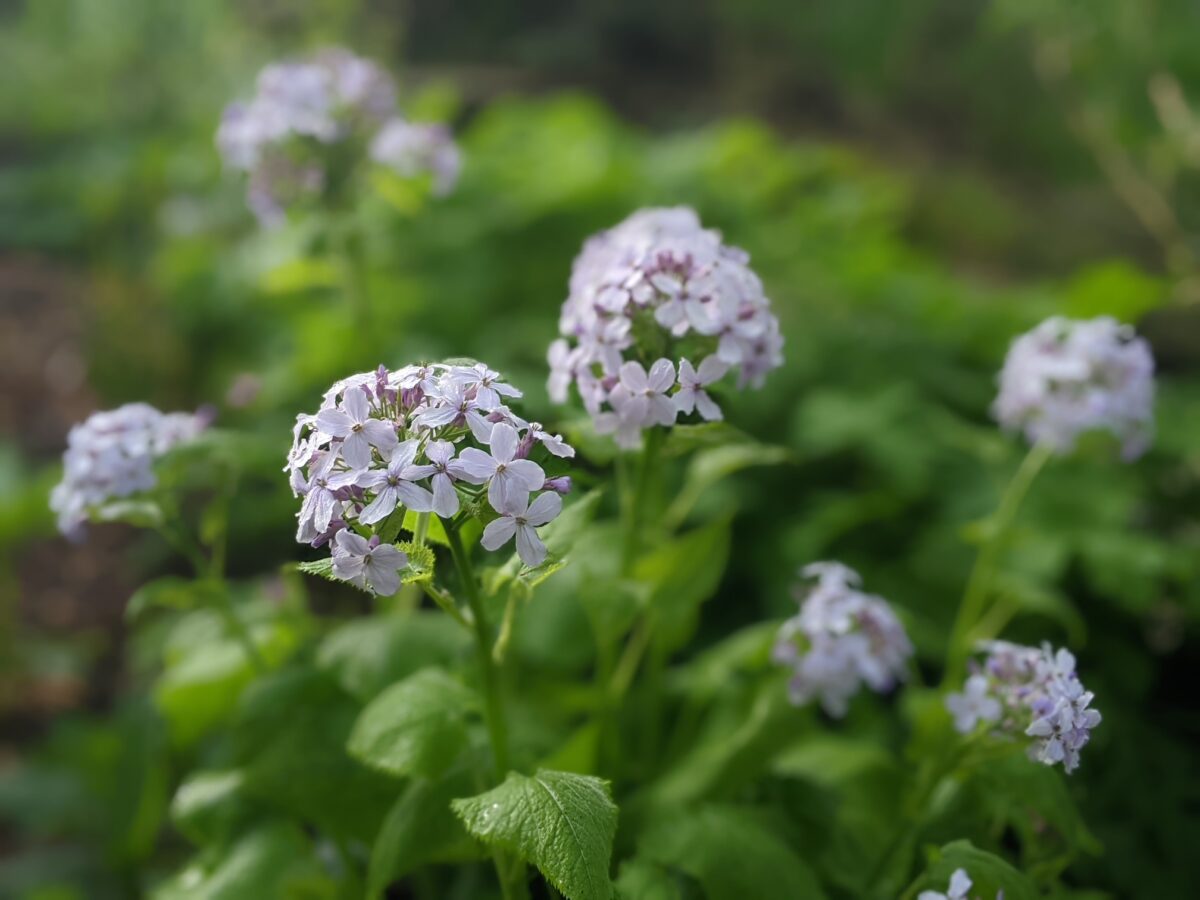perennial honesty

What colour is mauve? Now there’s an interesting question – it’s the colour of my chosen plant today. I’ve been reading a little about its origins and history and I’ve found some quite funny anecdotes including that apparently the artist James Abbott McNeill Whistler once called mauve “just pink trying to be purple”! I always have to stop and think about this colour when I’m describing a plant that has this hue.
I don’t like to describe Lunaria rediviva as lavender, lilac or violet, as these names are too linked to those particular plants for me; and purple is too dark. I picked up a book about colour* that I was given recently and read that in 1856, an enthusiastic young chemist called William Perkin was trying to synthesise quinine from coal tar and inadvertently discovered a dye of a purple shade, which he subsequently named mauveine – mauve being French for mallow whose colour is similar. How easy it is to get distracted!
This gentle yet sturdy, clump forming, perennial honesty is very hardy and very easy to grow, so what a shame that it’s not more widely used because it is an unusual and welcome sight at this time of the year. It’s found all over Europe in damp woodland (attaining 70-90 cm), so when you read its requirements as needing full sun or partial shade you can be sure that the latter is its preference. We grow ours in the dappled shade of a quince tree so it probably gets quite dry in the summer but it takes all this in its stride.
The mauve, round flowerheads are of generous size and lightly scented and are followed in autumn by the trademark translucent and papery seedheads of the biennial honesty but are pointy and oval, not round.
*The Secret Lives of Colour by Kassia St Clair
NB Louise has published a beautifully produced book of her plant profiles – A Plant for Each Week of the Year. It costs £9.99 and is for sale in our online shop here.
More NB If you’re not already a subscriber and you’d like a bit more gardening chitchat from the3growbags, please type your email address here and we’ll send you a new post every Saturday morning.

9 replies on “Lunaria rediviva AGM”
Some lovely choices here, although I’m not naming favourites and getting into sibling rivalry! Is there a fool proof method of pruning the flowering blackcurrant which is taking up a lot of space while ensuring flowering next year. My attempts have been very hit and miss.
Hi Linda, Elaine here. I like your diplomatic approach! Well, flowering currants flower on the previous year’s growth, so it’s best to prune them back just after they have finished flowering each year. They are pretty tough, so you can be quite firm with them if they are getting out of hand, and it works well to cut right out some of the oldest woody growth to let new stems develop. Hope that helps – happy gardening!
cut back tightly after flowering! I say! but I am not an expert, so ?
The Korean Lilac is a pretty little lilac with divine scent. easy to dead head because of its size. The scent of the Ribes, on the other hand reminds me of catpee, sadly this applies to both the pink and the more elegant looking white.
Thank you for writing in, Barbara, Elaine here. Yes, I think I might have even won my snooty sister Laura round with my lovely little lilac. But the currant is definitely not a shrub to put by your front porch, or indeed anywhere that you pass by frequently- that horrible whiff really lingers around it!
My favourite shrub is Viburnum opulus. The pure white globular fragrant flowers just get better and better. It peeps out a few odd flowers to test the weather , then erupts into a mass of flowers in April. After 12 years or so, it’s about 6 feet high.
That’s a great shout, Glenys! Elaine here, and I love my Viburnum opulus too. Those white flowers are followed by the most glorious translucent red berries that the birds go mad for. I’ll add it to our Fab Spring Shrubs list immediately!
Viburnum carlesii Korean Spice amazing too?
Hello Fanny,
You’re the second person to recommend this lilac so I’m definitely going in search of it! Thanks for taking the time to write in and tell us about it, and for endorsing Elaine’s advice to Linda about cutting back the flowering currant hard after flowering – we’re all learning together!
Best wishes and happy gardening, Laura